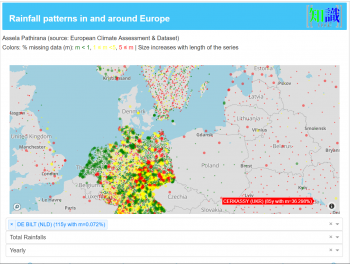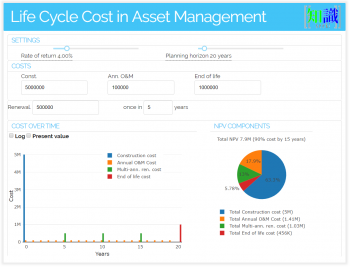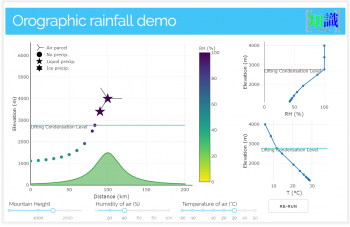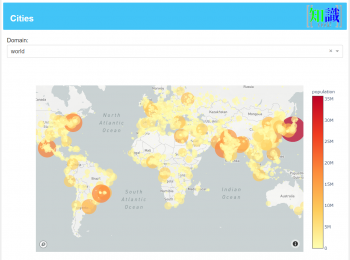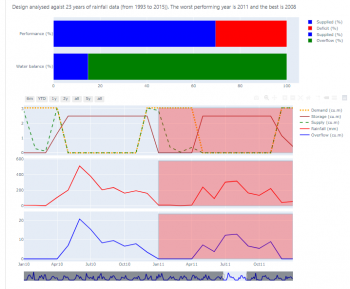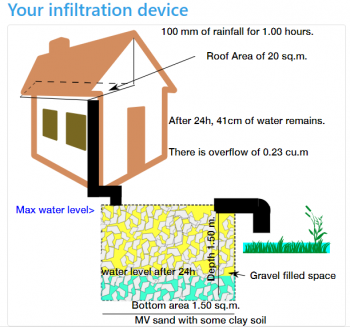Difference between revisions of "Webapps with python"
From assela Pathirana
Jump to navigationJump to search
| Line 6: | Line 6: | ||
===[http://er.wa.pathirana.net/ Precipitation records of Europe]=== | ===[http://er.wa.pathirana.net/ Precipitation records of Europe]=== | ||
<div style="overflow: hidden">[[File:raingauge_stations_europe.png|center|thumb|350px|Interactive map, analysis and plotting tool for precipitation]] | <div style="overflow: hidden">[[File:raingauge_stations_europe.png|center|thumb|center|350px|Interactive map, analysis and plotting tool for precipitation]] | ||
[https://www.ecad.eu/ European Climate Assessment & Dataset project] managed by Royal Netherlands Meteorological Institute (KNMI), collects meteorological data (pressure, humidity, wind speed, cloud cover and precipitation - see [https://www.ecad.eu/dailydata/datadictionaryelement.php here] for the complete description) from thousands of observation stations from (at the time of writing) 63 countries. As of september 2019, this database includes observations from 57312 stations. | [https://www.ecad.eu/ European Climate Assessment & Dataset project] managed by Royal Netherlands Meteorological Institute (KNMI), collects meteorological data (pressure, humidity, wind speed, cloud cover and precipitation - see [https://www.ecad.eu/dailydata/datadictionaryelement.php here] for the complete description) from thousands of observation stations from (at the time of writing) 63 countries. As of september 2019, this database includes observations from 57312 stations. | ||
| Line 12: | Line 12: | ||
===[http://lcc.wa.pathirana.net/ Life-cycle Costing Tool]=== | ===[http://lcc.wa.pathirana.net/ Life-cycle Costing Tool]=== | ||
<div style="overflow: hidden">[[File:life_cycle_costing_tool_python.png|thumb|350px|Life-cycle cost calculator. [https://lcc.wa.pathirana.net/ LINK]]]</div> | <div style="overflow: hidden">[[File:life_cycle_costing_tool_python.png|thumb|center|350px|Life-cycle cost calculator. [https://lcc.wa.pathirana.net/ LINK]]]</div> | ||
One of the routine tasks of Infrastructure Asset Management is to calculate the 'total cost of ownership' of an asset, for example, a building, a bridge or barrage. This involves consideration of the cost of purchase or construction, annual operation and maintenance, periodic renewal and sometimes the ultimate cost of disposal. These costs are all brought to the [https://en.wikipedia.org/wiki/Net_present_value present value (PV)] and aggregated. | One of the routine tasks of Infrastructure Asset Management is to calculate the 'total cost of ownership' of an asset, for example, a building, a bridge or barrage. This involves consideration of the cost of purchase or construction, annual operation and maintenance, periodic renewal and sometimes the ultimate cost of disposal. These costs are all brought to the [https://en.wikipedia.org/wiki/Net_present_value present value (PV)] and aggregated. | ||
| Line 19: | Line 19: | ||
===[http://oro.wa.pathirana.net Orographic lift of wind fields - atmospheric quantities calculator]=== | ===[http://oro.wa.pathirana.net Orographic lift of wind fields - atmospheric quantities calculator]=== | ||
<div style="overflow: hidden">[[File:orographic_lifting_tool_python.png|thumb|350px|Atmospheric quantities with orographic uplift [http://oro.wa.pathirana.net/ LINK]]]</div> | <div style="overflow: hidden">[[File:orographic_lifting_tool_python.png|thumb|center|350px|Atmospheric quantities with orographic uplift [http://oro.wa.pathirana.net/ LINK]]]</div> | ||
This is an educational tool to demonstrate the interaction of wind fields with mountains. The user can change the mountain height, humidity and temperature of the air and observe how they contribute to the formation of precipitation (liquid or sometimes ice/snow). | This is an educational tool to demonstrate the interaction of wind fields with mountains. The user can change the mountain height, humidity and temperature of the air and observe how they contribute to the formation of precipitation (liquid or sometimes ice/snow). | ||
===[http://citypop.wa.pathirana.net/ Urban population of the world]=== | ===[http://citypop.wa.pathirana.net/ Urban population of the world]=== | ||
<div style="overflow: hidden">[[File:citypop_tool_python.png|thumb|350px|Urban population of the world. Selected 13000 urban centres from around the world. [https://citypop.wa.pathirana.net/ LINK]]]</div> | <div style="overflow: hidden">[[File:citypop_tool_python.png|thumb|center|350px|Urban population of the world. Selected 13000 urban centres from around the world. [https://citypop.wa.pathirana.net/ LINK]]]</div> | ||
Using the curated dataset provided by [https://simplemaps.com/data/world-cities simplemaps] website, this plot shows the urban population of the world. Note: This dataset does not cover all the populated places. It covers almost all major cities and towns, but the coverage of smaller places could be uneven. | Using the curated dataset provided by [https://simplemaps.com/data/world-cities simplemaps] website, this plot shows the urban population of the world. Note: This dataset does not cover all the populated places. It covers almost all major cities and towns, but the coverage of smaller places could be uneven. | ||
Revision as of 09:15, 23 October 2020
Webapps with python
Python has a number of libraries that makes creating graphics based on data. Some of these tools can create interactive graphics and also web applications so that one can allow non-programmers to explore, analyse and visualize data. Ploty Dash is such a library with a particularly easy learning curve.
Demonstration
Here are some prototype applications that were created using this library. I use docker containers based on dokku -- a PaaS (Platform as a Service) --to host these apps.
